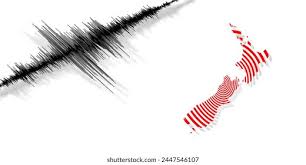
A Reminder to Be Ready: Why Rainwater Storage Matters in NZ
The big earthquake in Russia last week really got Ingrid and me talking.
It’s easy to feel removed from something happening on the other side of the world, but when you live somewhere like New Zealand, especially places like Wellington and Christchurch, you know deep down that it’s not a matter of if, but when. And while Wellington is often held up as the poster child for preparedness, the truth is, we all should be ready.
One of the most important things to have in an emergency is clean water. Not just a few bottles tucked in a cupboard, but enough to keep your household going for at least a week. The Civil Defence guideline is 3 litres per person per day for seven days, but that’s just drinking water. What about hygiene, cooking, and cleaning?
We’ve always seen rainwater harvesting as a smart, sustainable choice. But in moments like this, we’re reminded that it’s also a resilient one.
We have two tanks that meet standards AS/NZS 4020: 2002 Potable (Drinking) Water Standard and AS/NZS 2070: Part 1 and Part 8 Australian Standards for Food Contact. These tanks are our 800L Slimline and 1000L tanks.
Why does it matter? Natural disasters, whether it’s a big quake, a storm, or a boil-water notice, can leave us without clean water for days. Collecting rainwater isn’t just about sustainability or saving on your water bill (though it helps with that too). It’s about having control over one of your most essential needs.
And the best part? These tanks don’t just sit there waiting for an emergency. You can use the water in your garden, for washing the car, or even to flush the loo if the water is turned off.
